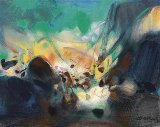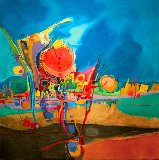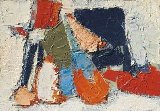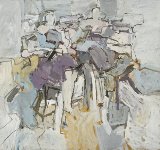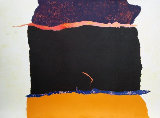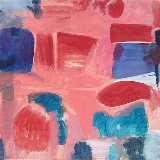-
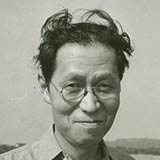
-
Saburo Hasegawa
JapanArt Brokerage: Saburo Hasegawa Japanese Artist: b. 1906-1957. SaburÅ Hasegawa as a Japanese calligrapher, painter, art writer, curator, and teacher. Throughout his career he argued for the connection between East Asian classical arts and Western abstract painting. Hasegawa's earliest works were oil paintings in the Fauvist or post-impressionist style. By the mid-1930s, when he first became involved with the Free Artists Association, Hasegawa's work was transitioning into abstraction, and he began experimenting with collage using materials such as yarn and glass. After the war, Hasegawa's paintings of the late 1940s began to explore imagery from prehistoric Japanese art, including artifacts from the JÅmon, Yayoi, and Kofun periods. This was a form of primitivism and Orientalism but specifically focused on Japanese culture, and was largely inspired by his "Old Japan and New West" theory. His interest in prehistoric Japan resonated with the postwar work of other Japanese artists such as TarÅ Okamoto, who was also examining ancient artifacts but was largely inspired by the primitivism of Parisian modernists. Around 1951, Hasegawa stopped working in oil painting and instead devoted himself to creating prints and ink paintings, and to exploring photography through photograms. Some of his ink paintings from this time closely approached avant-garde calligraphy practiced by calligraphers such as the members of the group Bokujinkai in the 1950s. Avant-garde calligraphy focused on the form of ink lines but often resulted in abstract art rather than conveying any legible characters. Hasegawa's paintings from this time thus merged the gesturalism of Japanese calligraphy with the spontaneity of postwar Western gestural abstraction. Hasegawa also created paintings in ink wash. His prints were monotypes in watercolor, gouache, or ink, made with kamaboko-ita (rectangular pieces of wood used to steam kamaboko, or fish cakes, in Japan) and funaita (ship planks) as the printing blocks. He also created ink rubbings, and mixed media pieces that combined any of the above techniques. Listings wanted.
Read More + - Create Listing 0 Artworks for sale 0 Followers
-
We are actively seeking listings for Saburo Hasegawa.
Create a free listing or free wanted ad.









